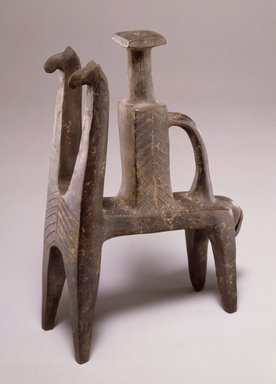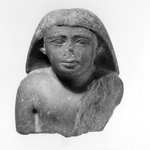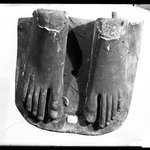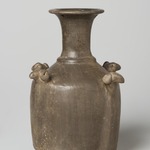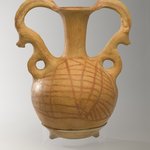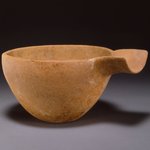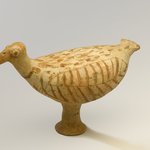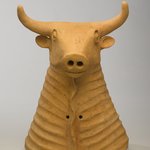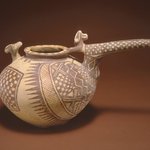Rectangular Bottle on a Two-Headed Horse
Egyptian, Classical, Ancient Near Eastern Art
Ancient Iranian Ceramics
These ceramics demonstrate ancient Iranian artists’ interest in creating containers and other ritual instruments in the shape of mammals or birds. This tradition was of incredible duration, stretching back to about 3000 B.C.E. of the Neolithic period and lasting as late as the sixth century C.E. These shapes relate Iranian art to the customs of neighboring regions of Mesopotamia, Greece, and Central Asia where animal art also played an integral role.
MEDIUM
Clay
DATES
ca. 800–600 B.C.E.
PERIOD
Urartian Period
DIMENSIONS
height: 7 1/2 in. (19 cm)
length: 5 1/8 in. (13 cm)
(show scale)
ACCESSION NUMBER
2015.65.30
CREDIT LINE
Gift of the Arthur M. Sackler Foundation, NYC, in memory of James F. Romano
CATALOGUE DESCRIPTION
The body of the bottle is square in section, rising to a tubular neck with a broad square rim. The circular mouth of the bottle is very small in comparison to the rim. The sides of the bottle are decorated with a sharply incised pattern of upward pointing chevrons linked by a central line. The bottle sits on the flat bench-like back of the horse whose slab-like forequarters are ornamented with another set of chevrons. The forequarters support two long, square-sectioned necks with small rounded heads whose only distinguishing elements are vaguely indicated ears. A curving handle arches from the back of the bottle to the back of the horse(s). The flat forms of the body, neck and legs suggest that the figure was built of clay slabs rather than modeled with rolls or coils. In contrast to the angular forms of the rest of the vessel, the tapered round tail curves up to touch the back.
MUSEUM LOCATION
This item is not on view
CAPTION
Rectangular Bottle on a Two-Headed Horse, ca. 800–600 B.C.E. Clay, height: 7 1/2 in. (19 cm). Brooklyn Museum, Gift of the Arthur M. Sackler Foundation, NYC, in memory of James F. Romano, 2015.65.30. Creative Commons-BY (Photo: Brooklyn Museum, 2015.65.30_PS11.jpg)
IMAGE
overall, 2015.65.30_PS11.jpg. Brooklyn Museum photograph, 2015
"CUR" at the beginning of an image file name means that the image was created by a curatorial staff member. These study images may be digital point-and-shoot photographs, when we don\'t yet have high-quality studio photography, or they may be scans of older negatives, slides, or photographic prints, providing historical documentation of the object.
RIGHTS STATEMENT
Creative Commons-BY
You may download and use Brooklyn Museum images of this three-dimensional work in accordance with a
Creative Commons license. Fair use, as understood under the United States Copyright Act, may also apply.
Please include caption information from this page and credit the Brooklyn Museum. If you need a high resolution file, please fill out our online
application form (charges apply).
For further information about copyright, we recommend resources at the
United States Library of Congress,
Cornell University,
Copyright and Cultural Institutions: Guidelines for U.S. Libraries, Archives, and Museums, and
Copyright Watch.
For more information about the Museum's rights project, including how rights types are assigned, please see our
blog posts on copyright.
If you have any information regarding this work and rights to it, please contact
copyright@brooklynmuseum.org.
RECORD COMPLETENESS
Not every record you will find here is complete. More information is available for some works than for others, and some entries have been updated more recently. Records are frequently reviewed and revised, and
we welcome any additional information you might have.
I’d like to learn more about these please.
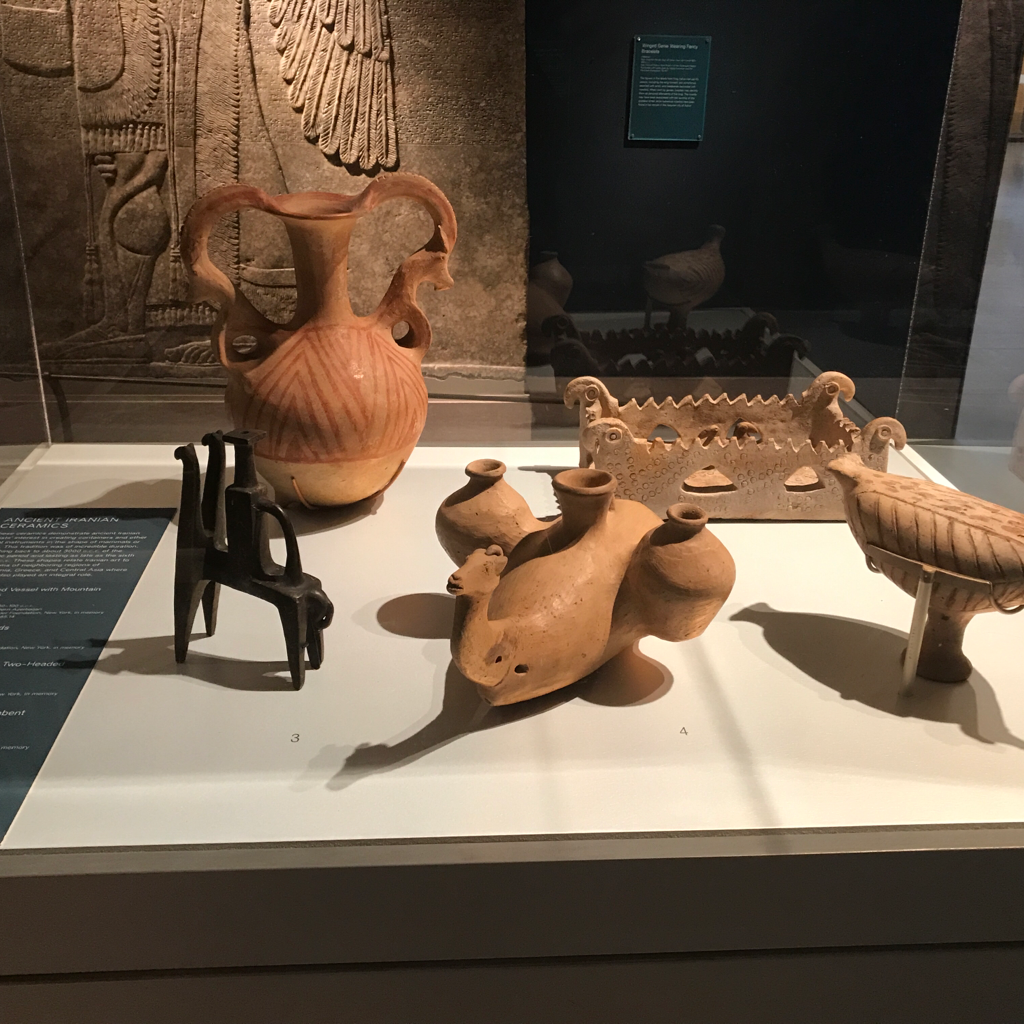
These vessels represent a few different cultures and time periods of ancient Iran. They're all made using different techniques. Elaborate vessels like these would have served ceremonial functions.
The one that I find most fascinating is the double-headed horse vase to the left. It comes from Northern Iran or Azerbaijan from a culture known as Urartu. Horses were important in Urartu because that was their main means of transportation and because the Urartians made their money by controlling trade routes.
Tell me more.
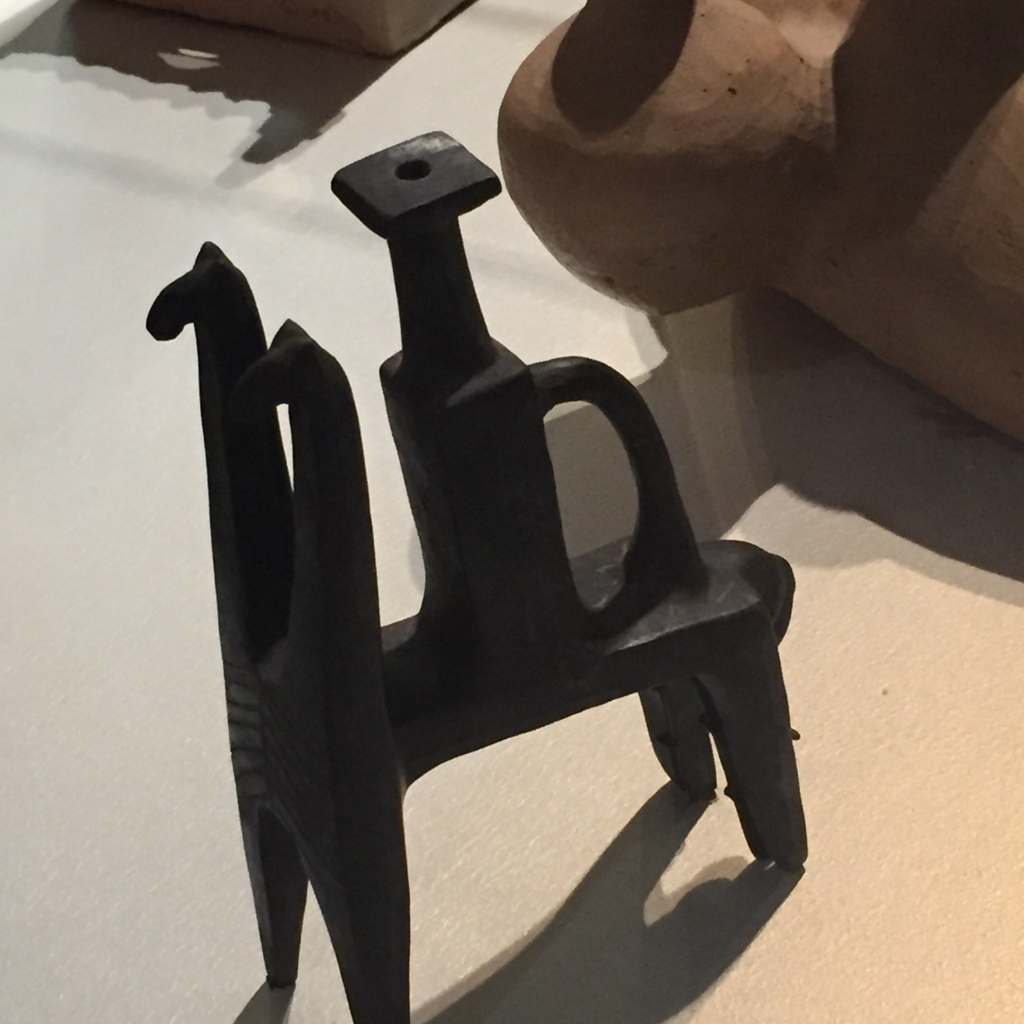
Angular vessels like this were popular with the people of Urartu who lived in what is now northern Iran and the Caucasus region. It would have been constructed using slabs of clay rather than coils.
A vessel this small was likely used for cosmetics of perfumes.
Thank you!!! Really appreciate the opportunity to ask questions!



